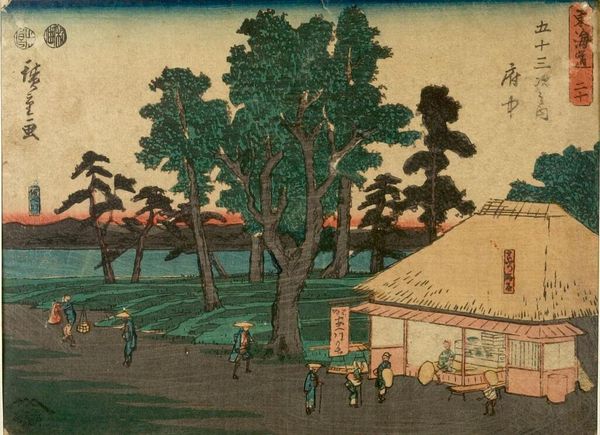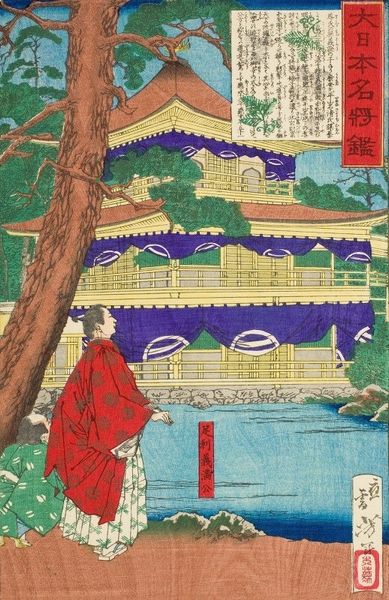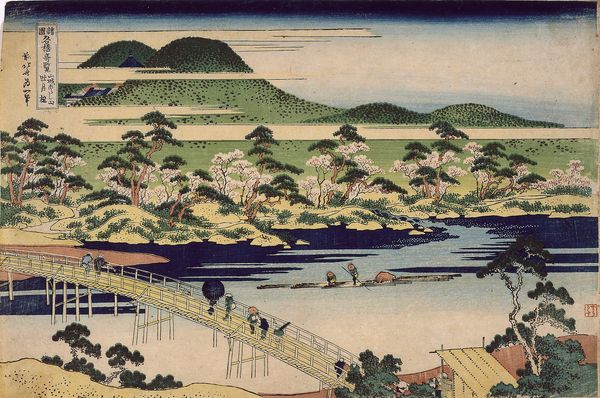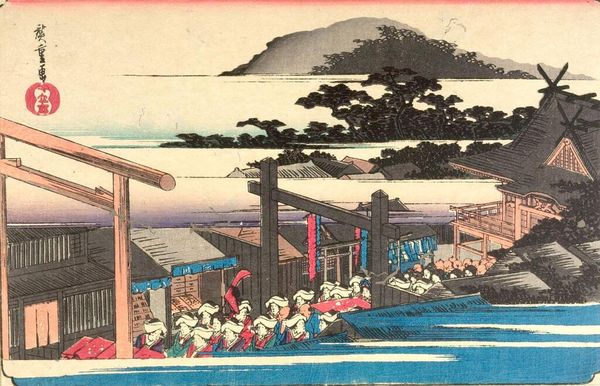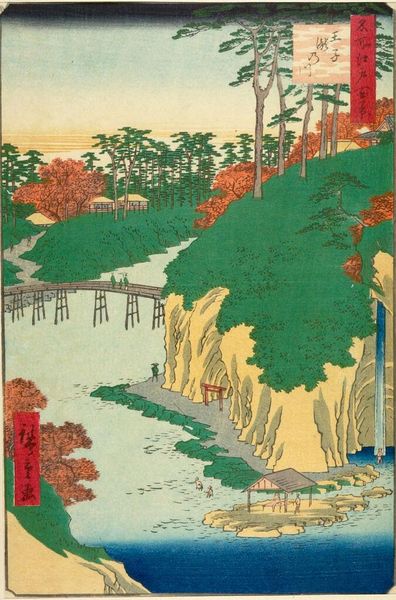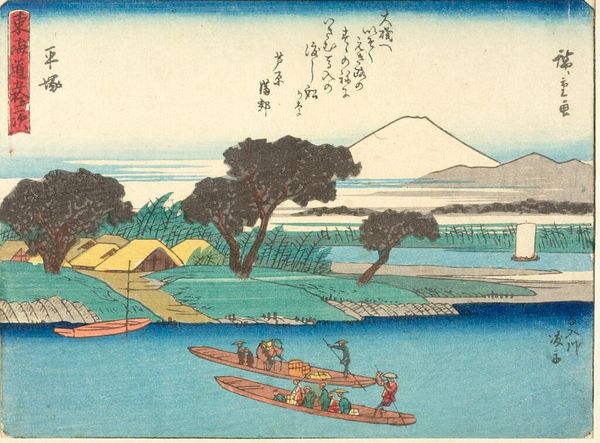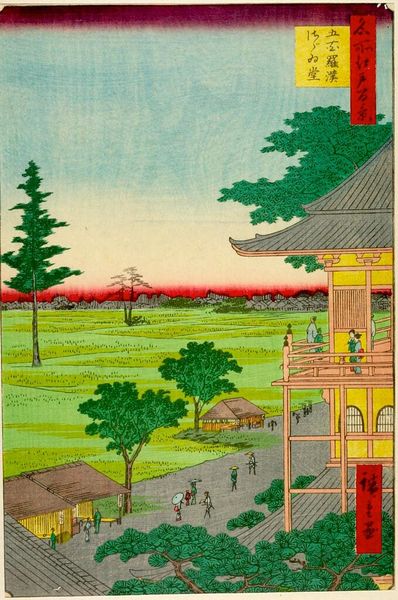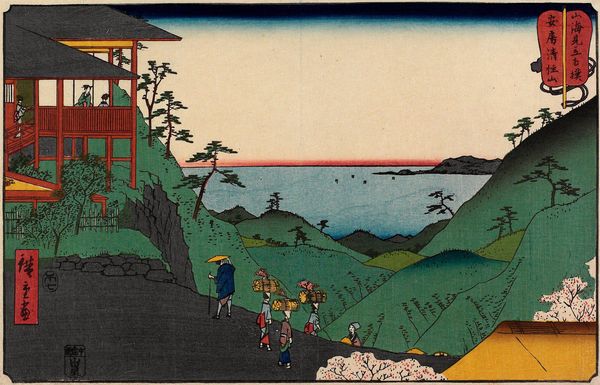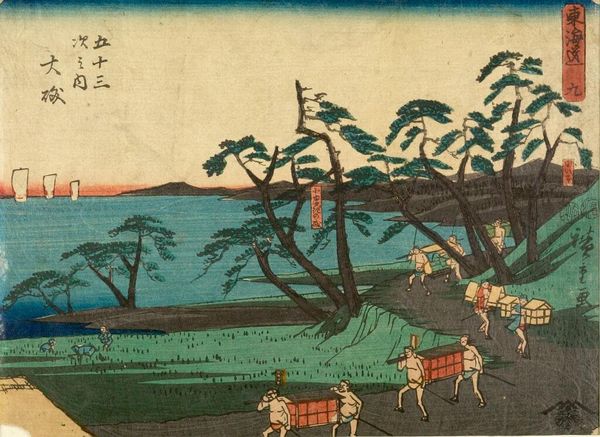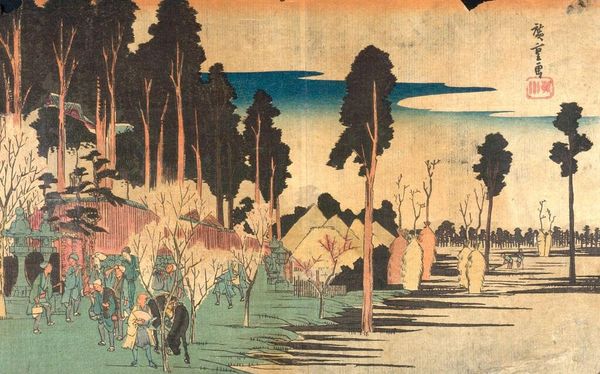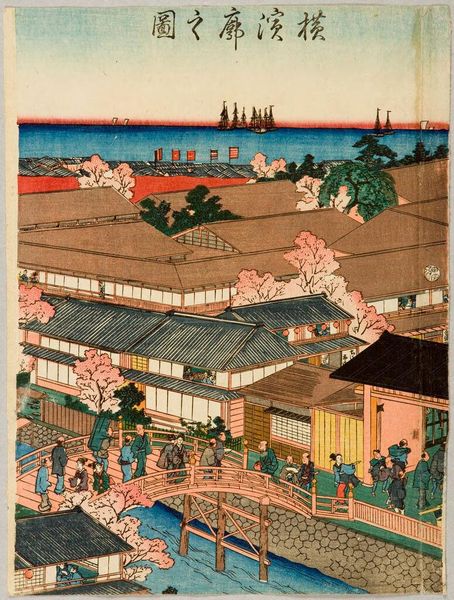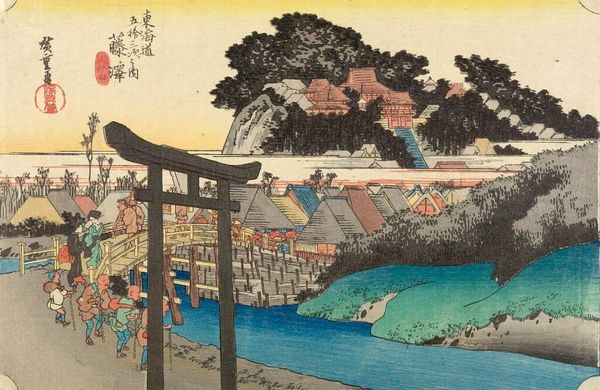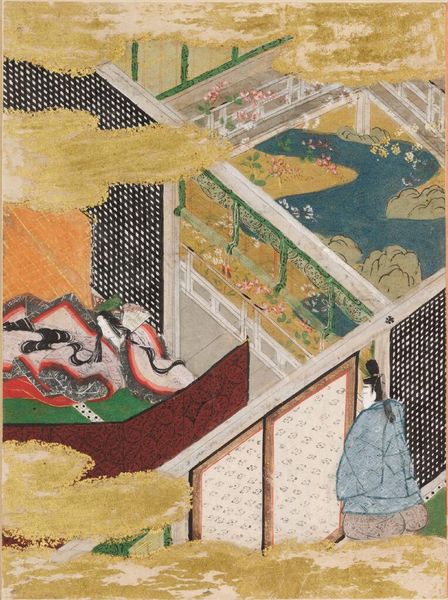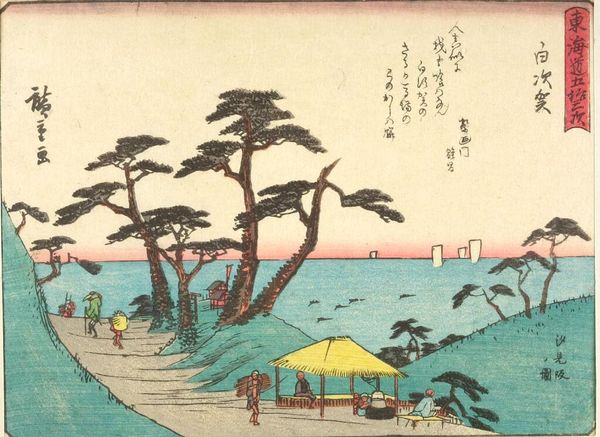
mixed-media, print, ink, woodblock-print
#
mixed-media
# print
#
landscape
#
ukiyo-e
#
japan
#
ink
#
woodblock-print
#
mixed media
Dimensions: 13 7/16 × 4 3/8 in. (34.2 × 11.1 cm) (image, chūtanzaku)
Copyright: Public Domain
Editor: This ink and color woodblock print, titled *Ochanomizu*, was created around 1837 or 1838 by Utagawa Hiroshige. The long, vertical composition really draws the eye upward, towards what looks like a distant mountain. What sort of story can we tell about this piece? Curator: Looking at this, I'm immediately drawn to how Hiroshige uses visual shorthand. Note the mountain, likely Fuji. It’s a symbol loaded with cultural significance in Japan, representing beauty, spirituality, and national identity. Its presence anchors the scene, doesn’t it? Editor: It does. It creates a sense of place. And what about the bridge and boats? They seem quite detailed in comparison. Curator: Precisely. The bridge and the boats, brimming with what appears to be cargo, suggest the bustling activity of everyday life, a bridge between the idealized symbol of Fuji and the lived reality of the people. It hints at the dynamic tension between the eternal and the ephemeral. Notice how the vertical lines created by the bridge piers create an alternating rhythm of shadow and reflection. What emotions are evoked with these elements? Editor: I suppose a sense of serenity mixed with purpose. There's a quiet beauty but also the suggestion of trade and movement. So, it's more complex than just a pretty landscape? Curator: Exactly. Hiroshige masterfully intertwines these seemingly disparate elements. Each symbol, from the pine trees representing longevity to the water signifying life's constant flow, adds layers of meaning, drawing the viewer into a deeper contemplation of Japanese culture and values. Think of *ukiyo-e* prints as capturing the floating world of transient beauty but with permanent impression. Editor: It's fascinating how much meaning can be packed into one image. I had no idea. Curator: Indeed. Understanding the symbolic language of art unlocks a richer understanding of a culture’s collective memory and values, doesn't it?
Comments
No comments
Be the first to comment and join the conversation on the ultimate creative platform.
